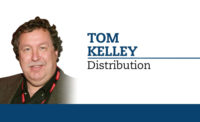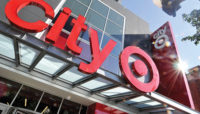Distribution
Urban landscape tricky to navigate for beverage distribution
Battery-electric trucks useful in urban areas

With much of the country (slowly but surely) returning to on-site work and downtown dining and commerce heading back toward full capacity, already complicated urban delivery environments are about to get even more complicated — or, at least, return to a more familiar level of complication. And, so far, the Delta variant doesn’t really seem to be putting a dent in that.
“During the pandemic, we did notice less traffic on our delivery routes,” says Kurt Strickmaker, president of BountyBev in Nashville — whose population grew more than 20% between 2010 and 2020, putting significantly more vehicles on the road. “The traffic seems back to normal currently.”
Traffic, of course, is only one of the challenges in densely populated cities, with limited parking options, narrow streets and crowds of pedestrians to contend with.
“When we deliver in busier areas, we have to be more conscious of pedestrians around us and be prepared to react to any unexpected movement from them,” Strickmaker points out. “The parking situations can be an issue because of the number of other distributors in the same area, but is not usually an issue due to personal vehicles unless there is an event occurring at the same time. That being said, we sometimes have to be creative if our preferred parking area is occupied. We try to limit the amount of time it takes to deliver to the account whenever possible, so parking as close to the account as possible is extremely important.”
BountyBev’s fleet consists primarily of box trucks, with a few Sprinter-style vans and a six-bay side-loader. “All of our vehicles have a respectable turning radius, which is the key consideration for delivering on narrow streets and alleys,” Strickmaker says. “Our vehicles also take up less space in tight c-store lots, which gives us an advantage as accounts prefer how we avoid disrupting parking for their patrons.”
Beyond the navigational obstacles that are common in cities, there’s the issue of emissions — for which urban vehicles account for an outsized portion. This is just one of the reasons that the current urban delivery landscape could be presenting an opportunity for broader adoption of electric vehicles.
Battery-electric trucks have always been better suited for cities than rural areas because of their limited geographic range. “The key for [the technology] being ideal for urban delivery is that, at this point, it’s pretty clear that range and payload are the key challenges with electric vehicles,” says George Miller, senior sales manager, national fleets, for electric truck maker BYD, which has been deploying Anheuser-Busch’s fleet of electric vehicles. “By keeping things urban, we’re able to reduce the batteries needed, allowing for more payloads — and that works from a physical standpoint.”
From an energy-efficiency standpoint, electric vehicles offer regenerative braking, which is especially beneficial in heavy stop-and-go situations. Another key advantage is lower carbon emissions.
“The climate benefits are very important,” Miller explains. “It’s clear that there are localized emissions benefits in reducing [nitrogen oxide] and there are much huger benefits when doing urban delivery. Not only does [electric vehicle technology] help reduce that local health impact, it’s a quieter ride. It improves the noise situation on the road.”
Additionally, Miller notes that with the current driver shortage, fleets are focusing more on overall driver experience to recruit and retain team members.
“Not having to rumble all the time and smell like diesel is a big benefit,” he says.
Looking for a reprint of this article?
From high-res PDFs to custom plaques, order your copy today!






